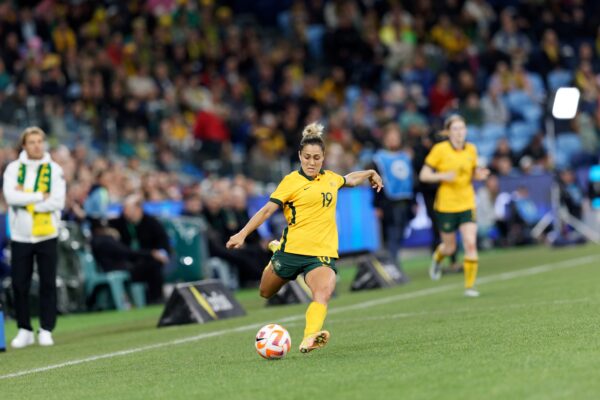
FC Leopold are set to reap the rewards of a $1.57 million facility upgrade project at Estuary Reserve, the club’s home ground.
Funding provided by the City of Greater Geelong Council and the Victorian Government’s World Game Facilities Fund will enable the construction of a modular pavilion, which will include female friendly changerooms, as well as spaces for amenities, storage and social activities.
The Victorian Government will contribute $250,000 to the project with the remainder funded by the local council.
Co-founder of FC Leopold, Jared Larkins, was heavily involved the process of acquiring the grants needed to fund the proposal.
“For some time, we had been lobbying through various groups such as the City of Greater Geelong Council, as well as the local and federal members – to fund this project,” he told Soccerscene.
“We got out and attended our own drawings and we created plans to really envisage what we wanted the site to be.
“We really just kept on council’s back that we needed this upgrade as our club was ever-growing and our two-room facility just wasn’t fit for purpose for any of our members.
“When the World Game Facilities Fund came along it provided an opportunity for the City of Greater Geelong to get on board. They had another project in Geelong they wanted to make happen, so I think that also helped us significantly.”
Larkins is optimistic that barring any COVID related issues, FC Leopold members will be in their new digs before the end of 2022.
“We are hoping that site works begin in either September and October,” he said.
“We should be in them by the end of year, they are modular and being built off site and then they’ll drop them on site and they should be finished off within a couple of weeks.”
The club itself was established just five years ago in 2016, registering multiple senior men’s teams, a senior women’s side and a handful of junior teams.
Although it has a relatively short history, the club is set to be benefitted by the upgrades in a wide range of ways.
“In terms of the club, it will allow our younger members and female members a little bit more comfortability in changing and playing at the club,” Larkins said.
“The current facilities are not the friendliest or most inviting of spaces, and we did have some members who wouldn’t change at the club for that reason.
“I think it will make our club more inviting and allow us to hold functions, which is something we haven’t been able to do since our inception. That will obviously allow us to raise some more funds, as at the moment if we want to hold a function, we have to rent out another venue.
“It will also give the club a chance to generate revenue in general, through canteen revenue, various functions and things like that, and because of that hopefully the club can grow its membership base.”
FC Leopold wants to continue to engage with the community and believes the new facilities will provide the locals with an appropriate avenue to connect through sport.
“The area of Geelong and Leopold is growing quite rapidly and there’s soccer clubs fifteen minutes either side of where we are positioned, so it allows the local community a spot closer to home to be able to play and be active,” Larkins said.
The club has ambitions to grow further and expand in future years, but according to Larkins, that wouldn’t be possible if they didn’t receive these facility grants.
“I don’t think our club would have been able to grow further without it,” he said.
“Without these additional facilities, we would be capped at the number of teams we have now.
“We have already probably expanded too much for what we’ve got at the moment, in terms of things we own such as equipment (as we don’t have enough space to store it on site), so without these new facilities we wouldn’t grow.”

























